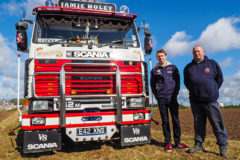Buses of the past
Posted by Chris Graham on 10th March 2020
Mike Forbes previews the latest in our archive series looking at the buses of the past, with a fantastic batch of 1950s and ‘60s archive images to delight PSV enthusiasts everywhere.
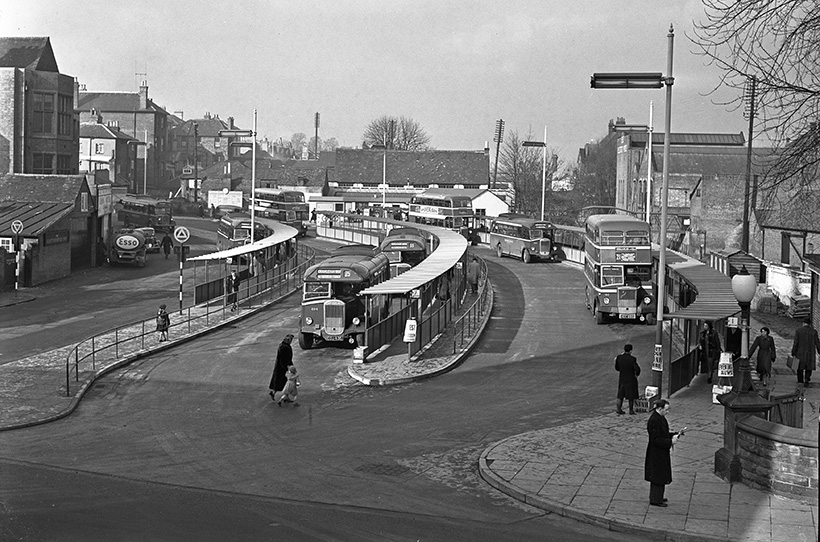
Buses of the past: Seen in 1952, Guildford Bus Station could accommodate 14 buses at the stands visible here, plus eight in another area off to the right, connected by a footbridge across the River Wey. It served the local and long-distance services of A&D, and half a dozen other operators. Here we see, from the right: A&D HOT 695, fleet no 166; a Dennis Lance III K3, with East Lancs L25/26R body, new in 1950, on route 21 to Haslemere, in front of EOU 475, fleet no 934 (D647); a Dennis Lancet III J3, with Strachan B32R body, new in 1948, on route 34 to Camberley, via Woking and a Guy Arab double-decker, EOU 435, fleet no 894 (D607); another Dennis Lancet III J3, with Strachan B32R body, new in 1947, withdrawn in 1956, on route 25 to Cranleigh, in front of a similar bus on route 33 to Horsham and a Dennis Lance double-decker on route 67. To the left, on the public thoroughfare, there’s another Lancet III and a pre-war Lancet II. Note the A&D Morris J Type van in the background, and the Esso tanker by ‘Salmon Motors’ and the rear of the Greyhound Inn. (CHC abb905)
This latest offering in the popular On the Buses series features photographs from the Chris Hodge ‘Stilltime’ collection. We spotlight vehicles from a variety of operators across the country, offering public transport around cities and towns, as well as country areas.
The photographs here illustrate a wide range of different types of vehicle – old and not so old – that were in operation in various circumstances. These contrast with other new buses and coaches, including some on display at commercial vehicle shows, or being road-tested by technical journalists.

Just over a year old when seen before leaving Cannock bus station for Kingstanding, was SBF 233, a Leyland PD2/28, with Northern Counties H36/28RD body, new in 1962, to Harper Bros of Heath Hayes, as its fleet No. 25. It was later joined by several other Titans, of the PD2A and PD3A types. (CHC abd824)
Most of these photographs were originally taken for possible use in magazines like Commercial Motor, which included passenger transport content for many years. The images would accompany articles resulting from journalists’ visits to an operator or, sometimes, more than one in a particular area, to talk to them about topical issues of the day.
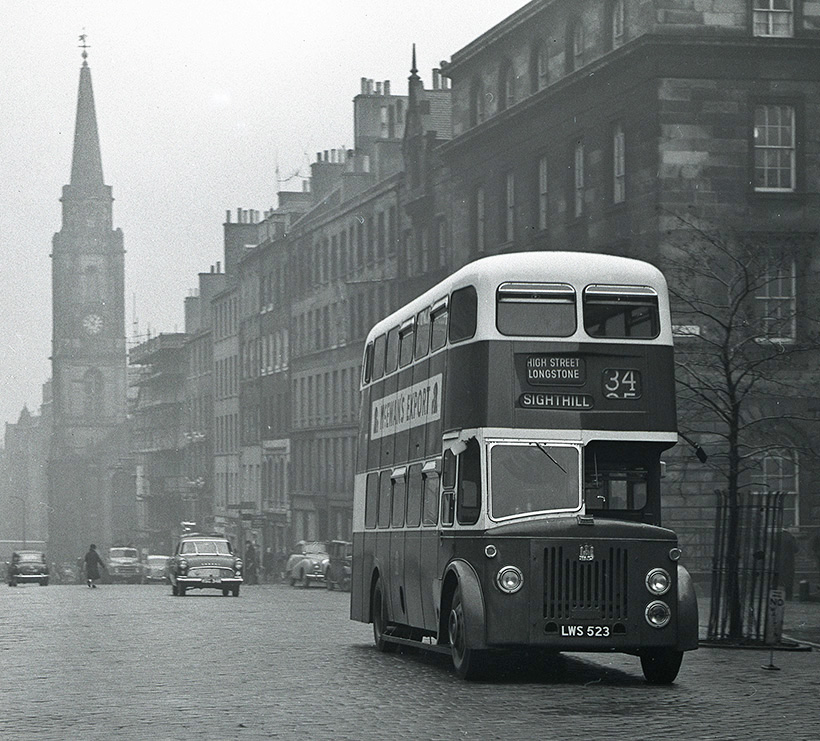
Here’s one of those ‘monstrous masses of shivering tin’, LWS 523, a Leyland PD2/20, with Metro-Cammell ‘Orion’ H34/29R body, dating from 1955, fleet No. 523. It was one of 300 similar vehicles delivered to Edinburgh between 1954 and 1957, to replace the trams in the city. (CHC aat437)
Dating mainly from the early 1950s to the mid-1960s, the photographs here feature big company operators including Aldershot & District, Midland General, Notts & Derby, Llanelly & District, Thomas Bros and others, visited in 1952. Also municipals include Edinburgh, Aberdare and Southport from around 1960, while independents include Harper of Heath Hayes, Hants & Sussex, Premier Travel and Pennine Motor Services in the 1950s. There are also sections on London in wartime, Dublin in 1951, plus the 1962 Commercial Motor Show, buses seen out on road test, and some manufacturers’ brochures.
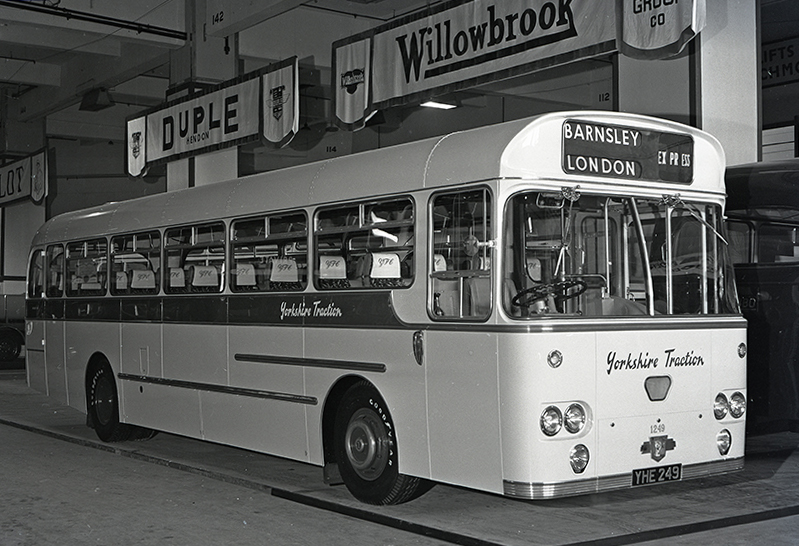
Leyland introduced a 36ft version of its Leopard chassis at the 1962 show. Here, on the Willowbrook stand (by then a Duple Group company), we see YHE 249, a PSU3/3RT, with DP47F for Yorkshire Traction, fleet No. 1249. (CHC aap934)
We’re fortunate that the interesting background to many of the images can still be found in the CM archives, which are now available online. However, many of the photographs taken weren’t used at the time, and it seems a shame for them never to be presented for enthusiasts to enjoy, hence their inclusion here. It should be noted that the number of photographs taken on individual visits did vary for different reasons, including the number of magazine pages being allotted to the different operators.
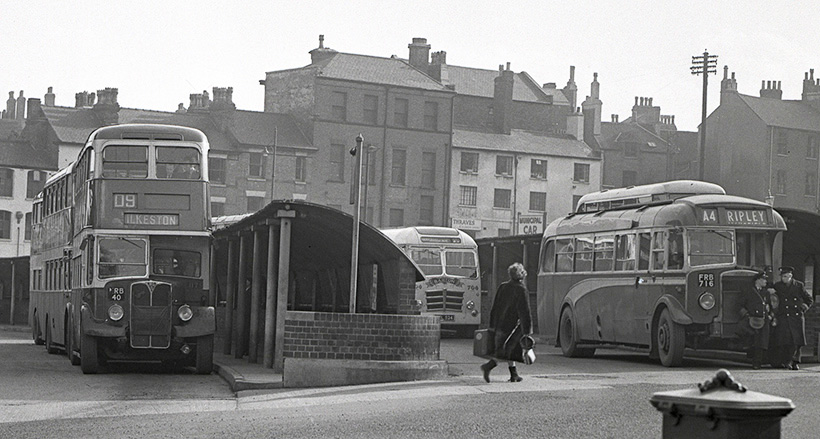
A view of Mount Street Bus Station, in Nottingham, with vehicles from the fleets of Notts & Derby, Midland General, Barton, Trent and Midland Red in view. All these companies were enjoying a boom in passenger numbers during the early, post-war years in the East Midlands coalfield area. (CHC aba126)
So, we must be grateful for our access to the ‘Stilltime’ image collection, as well as the information gleaned from the Commercial Motor archive and other sources on the internet, including Bus Lists on the Web, plus various period publications, like the Ian Allan ABC Bus Fleets books. All have been referred to in the captions here. Of course, I must accept responsibility for any mistakes, for which I apologise.
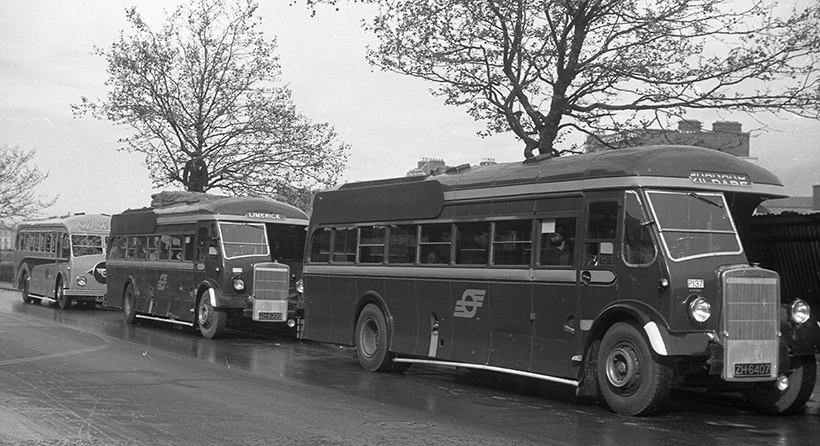
Three single-deck vehicles are seen on the stand beside the River Liffey, being readied for some long-distance routes. In front is CIE fleet No. P137, ZH 6407, a Leyland OPS3/1 with B39R bodywork, 30ft long and 8ft wide, built by the operator in 1949 (withdrawn in the mid-1960s), off to Kildare. Behind is the similar P129, ZH 6399, with a number of passengers already on board, waiting to leave for Limerick. Both carried plates beneath their fleet numbers, showing they were based at Broadstone Garage. At the rear is fleet No. P282, ZJ 6022, also a Leyland OPS3/1, but with CIE-built FC30F, new in June 1951 (withdrawn in 1970), one of a series of these coaches named after rivers, in this case, the Fergus, shown in script above the windscreen on the yellow and grey livery. Another shot from the rear shows how luggage was loaded from the barrows on to the roofs of these stylish, if perhaps a little old-fashioned, vehicles. (CHC aau557)
If you have local knowledge, any additional information or, indeed, corrections which would be of interest to other enthusiasts, please get in touch so that we can spread the word. A further point worth mentioning is that many of these pictures aren’t the classic, ‘front three-quarters’ shots which we, as enthusiasts, tend to prefer.
They were often taken with aspects of operation in mind, rather than the vehicles. But views including more background, rear ends and even those which are partially obscured by staff, passengers or passing pedestrians, can add to the overall atmosphere.
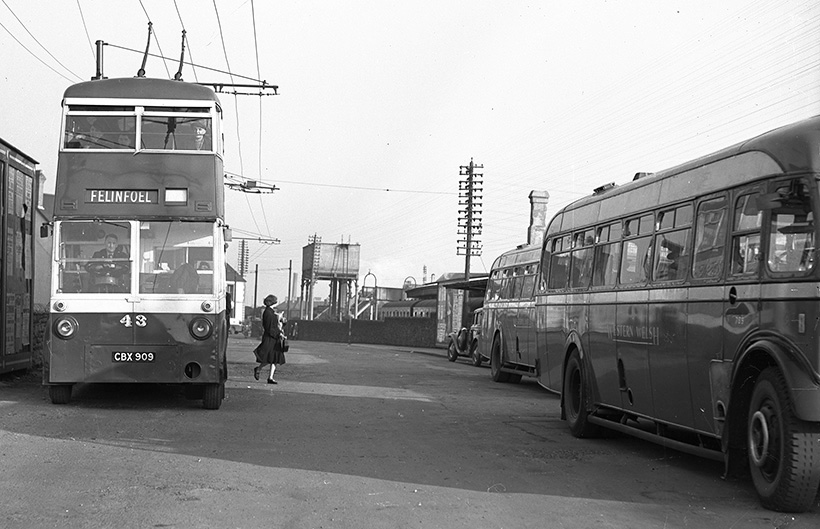
Llanelly District Transport Co fleet No. 43, CBX 909, a Karrier W new in 1945, with BTH electrical equipment and Park Royal UH30/26R bodywork, in a dark green and cream livery, prepares to depart from the railway station for the Felinfoel terminus. The vehicle passed to Bradford when the Llanelly system closed, not long after this photo was taken, being re-bodied by East Lancs. On the right, we can see two Western Welsh single-deckers, including fleet No. 798, CUH 798, a Leyland PS1/ECW B35R of 1946. (CHC aav307)
These images help to bring back memories of days gone by, and all the interesting bus and coach operations of the past. In many cases, they were very different from those of today, but some were often surprisingly similar, notably with respect to the problems which had to be overcome. There has been much rebuilding of towns and cities since these photographs were taken, with features like pedestrianised streets, but many landmarks can still be seen, so scenes can still be recognised, although the vehicles have certainly changed over the years!
You can subscribe to Vintage Roadscene magazine by clicking here




